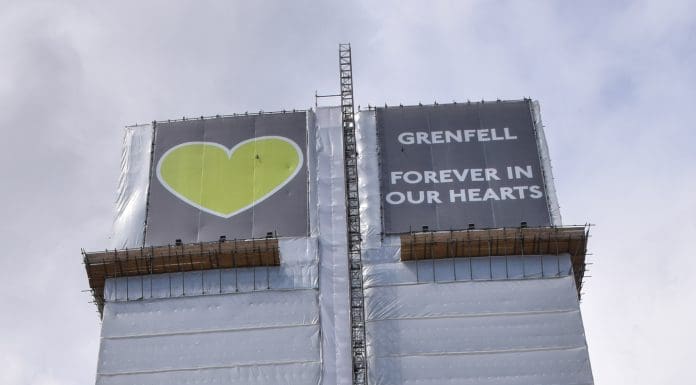The Grenfell Tower Inquiry’s damning final report and the recent tower block fire in Dagenham are a stark reminder that building safety can no longer be dismissed as someone else’s problem, writes Jason Instrell, industry lead at SFG20, the industry standard for building maintenance specifications
The Building Safety Act has set a clear path for the construction industry; a path that ensures buildings are constructed and maintained to high safety standards, forcing non-compliances to be rectified.
Building safety is in the spotlight, it can no longer be “someone else’s problem”. Health, safety, wellbeing and ongoing maintenance to current legislation must remain our key focus. Although a reactive “fix on fail” strategy might suffice for non-statutory maintenance tasks, we must not overlook any statutory (legally) required upkeep – an oversight that can put both property owners and occupants at risk.
The recent tower block fire in Dagenham and the long-awaited verdict of the Grenfell Tower Inquiry report have once again brought the critical issue of fire safety in buildings to the forefront.
These events serve as a stark reminder that the safety of building occupants must remain a top priority, and that buildings must remain compliant with current legislation, such as the Building Safety Act 2022. This is paramount in ensuring a safer built environment for all.
The damning final report from the Grenfell Inquiry revealed that every one of the 72 deaths in June 2017 was avoidable and was the result of decades of failure and non-compliance with fire safety regulations.
With industry experts warning government officials of fire safety issues from 25 years before the Grenfell disaster occurred, cladding-related risks were not a new phenomenon of the 21st century.
Despite continued efforts to tighten building regulations, including fire safety tests in 2001, proving the specific cladding type “burned violently”, no changes were made.
Almost a decade later, the Lakanal House fire of 2009 claimed the lives of six people, and yet, the same safety concerns remained.
The Building Safety Act 2022: A response to the Grenfell tragedy
The Building Safety Act 2022, introduced in the wake of the Grenfell Tower fire, has intended, for the past two years, to improve all aspects of a building’s lifecycle, from design to construction and maintenance.
The “Golden Thread” is a core principle of the act, conceived to ensure an in-depth and uninterrupted flow of information is kept and maintained throughout a building’s lifespan. The Building Safety Act 2022 demands that building owners and maintenance managers are systematically documenting all maintenance tasks and changes, ensuring that this information is accessible and secure.
In the design and construction phases of a building, the Client bears the responsibility for maintaining the golden thread of information and showing that the design and construction complies with Building Regulations. To do this, records must be kept showing how those involved complied with these requirements (Principal Designer and Principal Contractor).
Once complete, the information about the building is then transferred to the Principal Accountable Person (PAP) or Accountable Person (AP) for a high-rise residential building – this typically lands on the person or organisation in ownership of the building or responsible for the building’s maintenance once occupied.
The existence of the PAP now ensures that any liability and accountability lies with a clear individual or organisation, who is not able to pass on their duty to another.
The overlooked risks of non-compliance
Despite the building safety tragedies of the last two decades, there is still a high percentage of buildings that fall short of compliance.
Non-compliance now carries both legal and reputational risks, and understanding one’s responsibilities in building maintenance has never been more crucial.
Failing to comply with building safety regulations, such as the Building Safety Act 2022 or the Fire Safety Act 2021, exposes building owners and maintenance professionals to serious risks.
An oversight of many in the industry is that criminal liability does not require specific cases of harm to occur – simply not complying with statutory maintenance requirements can lead to accountability and, as a consequence, sanctions.
The sanctions for non-compliance may include:
Reputational harm and an inevitable loss of revenue.
A rise in insurance costs.
Legal penalties, including fines (averaging £150,000) and potential prison sentences.
For more information on how to avoid the penalties and sanctions for non-compliance, SFG20 have put together a Building Safety Act 2022 compliance checklist, which can be downloaded here:
https://www.sfg20.co.uk/e-guides/building-safety-actchecklist
Launched in 1990 by the Building Engineering Services Association (BESA), SFG20 is recognised as the industry standard for building maintenance specification.
The post The Building Safety Act 2022: A stark reminder in the wake of fire safety tragedies appeared first on Planning, Building & Construction Today.


